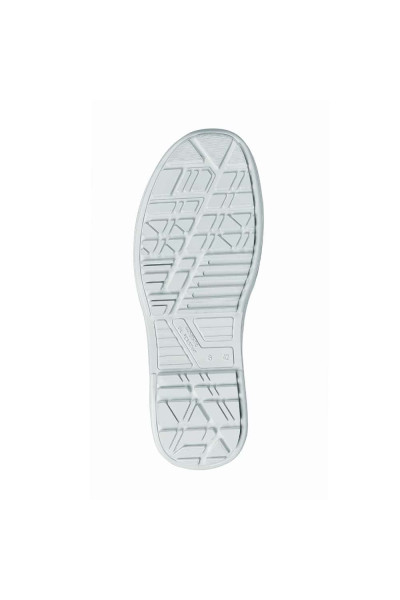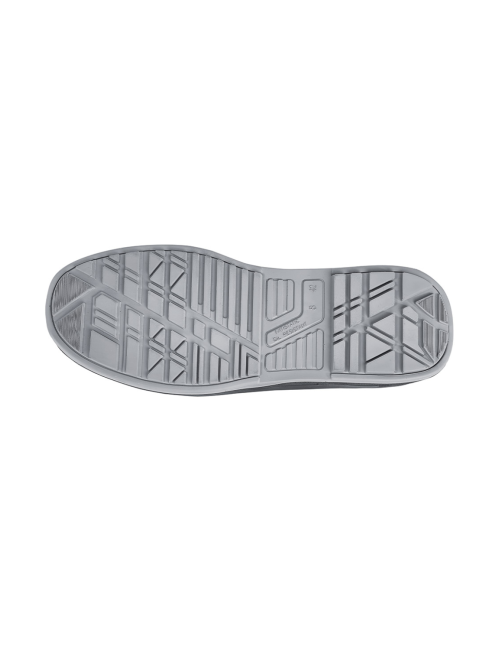Work Shoes: Safety and Style for the Aesthetic Sector
In the beauty and wellness industry, choosing the right work shoes is essential to ensure maximum protection and comfort in the workplace. Professional shoes are classified into different safety categories, each designed to address specific professional needs, perfectly adapting to the various risks present in beauty salons and wellness centers.
Safety Classes of Work Shoes
Each work environment presents different challenges and hazards, which is why work shoes are distinguished into various safety classes, each tailored for a specific type of task:
- SB: Ideal for environments less exposed to high physical risks, such as beauty salons and aesthetic studios, where it is necessary to protect the feet from slips and minor impacts.
- S1: Perfect for beauticians and wellness professionals working in spaces where moderate risks are present, such as bumps and crushes.
- S1P: The most commonly used work shoes, particularly suitable for those working in salons, thanks to their ability to combine comfort and protection against punctures.
- S2: Recommended for those working in humid environments, such as wellness centers or spas, providing protection from water.
- S3: Offer a high degree of protection against weather conditions, ideal for those working outdoors in adverse climatic conditions.
Additional Features for Aesthetic Work Shoes
In addition to safety classes, work shoes can be equipped with additional features that provide further levels of protection, particularly useful in contexts where comfort is essential:
- A: Protection against the buildup of static electricity, useful for those working with electronic equipment.
- C: Insulation from electric shocks, important in environments with electrical risks, such as in aesthetic cabins.
- E: Energy-absorbing sole in the heel area, to improve comfort during long working hours.
- M: Metatarsal protection, essential for those using heavy equipment or working in confined spaces.
- P: Puncture-resistant sole, ideal for protecting feet in environments with sharp or cutting materials.
- CI: Cold insulation, perfect for those working in refrigerated environments or outdoors during winter.
- WR: Completely waterproof shoes, essential for those working in damp environments or in the rain.
- SRC: Maximum slip resistance, particularly useful in salons or aesthetic centers where the floor can be slippery.
CE Regulations for the Aesthetic Sector
All work shoes for the aesthetic sector must be certified in accordance with European regulations to ensure compliance with the safety requirements established by law. The main regulations include:
- EN ISO 20344: Defines test methods and general requirements for verifying the protection of professional footwear.
- EN ISO 20345: Requires that the toe cap of the shoes withstand a weight drop of 20 kg from a height of 1 meter, ensuring protection against impacts and compression.
- EN ISO 20347: Pertains to work footwear without toe caps, commonly used in environments less exposed to serious risks.
Toe Cap in Work Shoes
The toe cap is one of the key components in work shoes for the aesthetic sector, as it provides essential protection against impacts and crushes. The materials used for the toe cap can vary, with different options to meet comfort and safety needs:
- Steel: A traditional material, extremely robust and heavy, used mainly in environments with high crushing risks.
- Aluminum: Lighter than steel, it still offers excellent protection and is appreciated for its comfort and thermal insulation.
- Composite materials: Provide equally effective protection but with reduced weight, making them ideal for those seeking lightweight and comfortable footwear without compromising safety.
In the aesthetic sector, choosing the right work shoes can make the difference between working safely and risking injuries. It is essential to consider the safety class, additional features, and regulations to ensure that the shoes fully meet the needs of the working environment.














